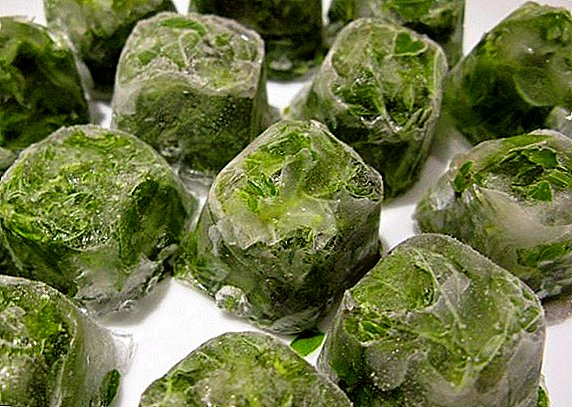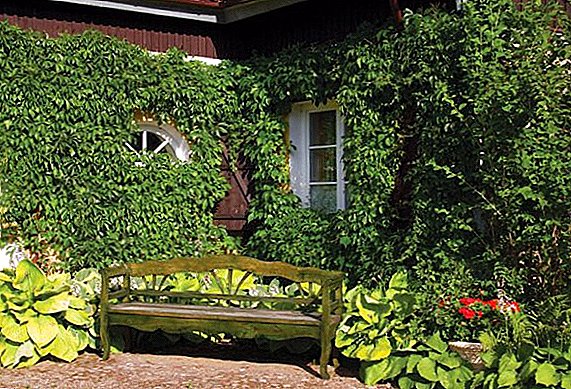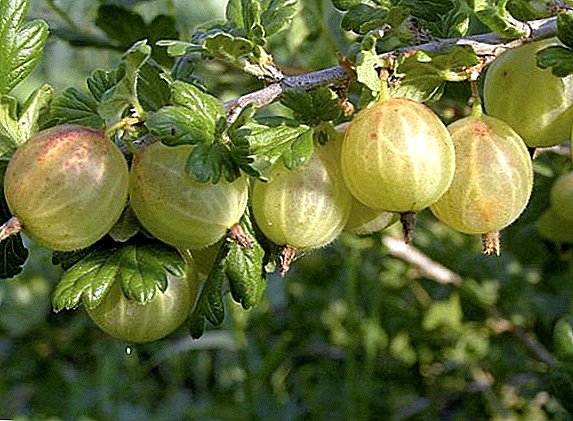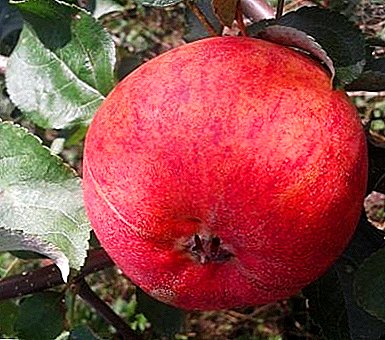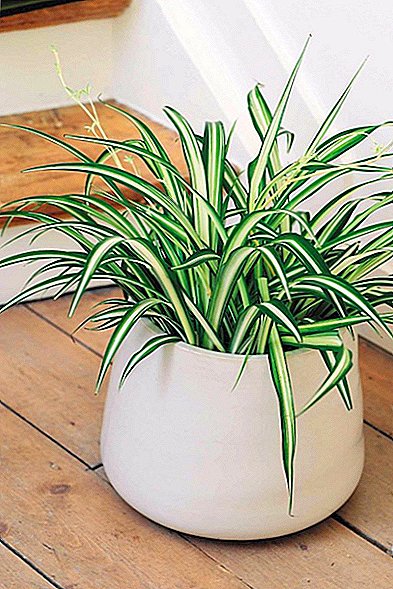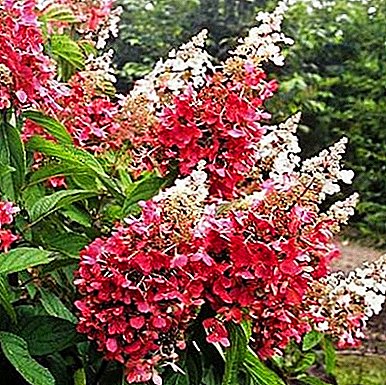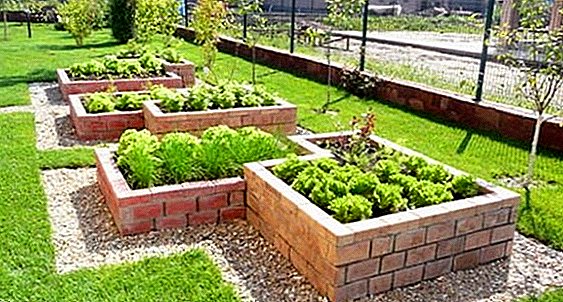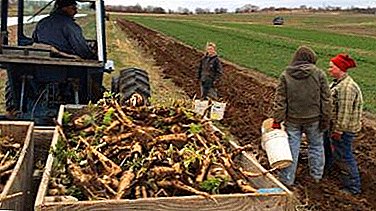
Horseradish has long been an important ingredient in the preparation of home canned food. And also it is used for making snacks. This is an unpretentious plant, but its cultivation has certain features. This product is in demand from buyers. Therefore, in Russia it is quite possible to create a business of growing horseradish. After reading this article, you will learn about the pros and cons of growing root vegetables for business, the profitability of such an enterprise, the necessary investments and possible profits, as well as planting, raising horseradish and controlling pests and diseases.
Advantages and disadvantages of this business
Consider the advantages and disadvantages of growing a root vegetable commercially.
Benefits:
- quick return on investment;
- small amount of initial investment;
- low labor intensity of production;
- simple agricultural cultivation;
- the presence of a "free niche" in this area on the agricultural market.
disadvantages:
- the presence of not very large demand for this product, although it is popular with people;
- at the initial stage it is difficult to find a reliable supplier of planting material;
- the need for soil cultivation and fertilization;
- in the absence of wholesale buyers, there may be difficulties with sales.
The profitability of such an enterprise
Root yield from 1 ha
On 1 km2, 4-6 0000 bushes are cultivated, which at harvest allows to get 20 000 kg of ready-made rhizomes.
Reference! Of the obtained root crops, 60% are of commercial quality (for food and medical use), the remaining 40% are used as planting material.
Calculations
Initial capital
 On agricultural soil preparation area of 1 hectare you need to spend 30,000 rubles. This includes plowing, harrowing, and preparing the soil directly for planting. Processing of mineral fertilizers in the area of 1 hectare will be 16,000 rubles. Further tillage and harvesting will cost 45,000 rubles.
On agricultural soil preparation area of 1 hectare you need to spend 30,000 rubles. This includes plowing, harrowing, and preparing the soil directly for planting. Processing of mineral fertilizers in the area of 1 hectare will be 16,000 rubles. Further tillage and harvesting will cost 45,000 rubles.
6 rhizomes of horseradish (0.5 kg) are planted per 1 m2. The entire area will require 0.5 kg × 10,000 = 5000 kg. The cost of 1 ton of horseradish planting material in 2018 averages 18,000 rubles. For planting on 1 hectare you will need to purchase seeds in the amount of 90,000 rubles.
Profit
Received 20,000 kg of horseradish from 1 hectare can be realized for 360,000 rubles. Net profit minus expenses will be about 200,000 rubles per 1 hectare.
In the next year after the first harvest, you will not need to acquire planting material - you will be fully provided with your own.
Profitability
This type of business is profitable and pays off in the very first year. Average profitability will be about 70%.
Is it profitable?
To grow horseradish for sale is a profitable enterprise that will allow you to recoup the investment after the first harvest. Sale is possible both to wholesale buyers, and at retail. Selling to wholesalers is preferable, as this will reduce transportation costs and speed up the process of selling products.
Growing business plan
Market analysis
In Russia, products containing horseradish are popular, but there are no major monopolists in this area. Therefore, your company can occupy a free niche without encountering serious competition. Most producers of horseradish are individuals - entrepreneurs.
Total investment
Total investment may include yourself:
- the cost of renting or buying land;
- salary to hired personnel;
- fare;
- the cost of purchasing or renting agricultural equipment;
- purchase of insecticides and fungicides.
Attention! In different regions of the Russian Federation, the prices for these categories are very different, so in each region the amount of costs can be completely different.
Choice of taxation system
The tax system depends on the form of activity:
 Peasant farm - subject to a single agricultural tax (UAT).
Peasant farm - subject to a single agricultural tax (UAT).- Individual entrepreneur - simplified taxation system (USN).
The tax rate is the same for both forms of registration.
Ltd. may be taxed:
- general taxation system (DOS);
- simplified (USN);
- single tax on imputed income (UTII).
check in
When registering, apply the code of the OKVED classifier 0112840. When registering an agricultural enterprise, first of all it is necessary to register it in the manner prescribed by law. This will avoid violation of current legislation.
Procedure for registration of the IP:
- Collection of documents:
- an application for state registration of an individual as an individual entrepreneur (Form No. P21001);
- copy of the passport;
- receipt of payment of state duty.
- The state registration of an individual as an individual entrepreneur takes place in the tax authority at his place of residence, that is, at the place of registration indicated in the passport. If there is no place of registration in the passport, then the registration of the entrepreneur can be carried out in the tax authority at the place of actual residence.
- Transfer of documents to the tax office. They can be transferred in person or remotely.
- Directly to the inspection - in person or by proxy.
- It is also possible to execute documents in the multifunctional center - in person or through a proxy representative.
- Reception of documents in the tax authority.
- Reception by the person of documents on the state registration.
- If all documentation is in order, after 3 workers, the EGRIP record sheet is issued to the applicant.
Documents can be obtained personally or through a representative of a notarized power of attorney.
If you are going to grow horseradish in large industrial volumes, then LLC will be the best form of organization. A limited liability company is an economic company established by one or several legal entities and / or individuals, whose authorized capital is divided into shares.
 Members of the company are not liable for its obligations and bear the risk of loss.associated with the activities of the company, within the value of their shares or shares in the authorized capital of the company.
Members of the company are not liable for its obligations and bear the risk of loss.associated with the activities of the company, within the value of their shares or shares in the authorized capital of the company.
For entrepreneurs who do not have a large amount of initial investment, the most acceptable form of organization of production will be a peasant farm (KFH) - up to 1 ha of land. Also a convenient form is - an individual entrepreneur (PI).
Varieties: which one to choose and why?
Currently, the most common varieties are:
- atlas;
- Valkovsky;
- and tolpukhovsky.
They are most suitable for industrial cultivation, because they are hardy to adverse conditions, withstand drought. Also, these varieties are resistant to pests and diseases.
Atlant
It has a white root with a gray tinge, on which there is a small number of hillocks and small peripheral roots. Milky white rhizome. The root length of twenty that fifty centimeters. The diameter of the rhizome is five centimeters. This variety is mid-season.
The vegetation period from planting to the death of the leaves is about 130 days. It blooms in the second year after planting. This species is resistant to frost, heat and drought. Finished products are well kept. The weight of one root is up to 150 grams. It has a pleasant aroma and taste.
Valkovsky
It is a late ripening variety. The length of the root reaches up to sixty centimeters. The root of a cylindrical shape, has a yellow tint. The vegetation period from planting to the death of the leaves lasts about 130 days. The mass of one root reaches up to 150 grams.
Tolpukhovsky
Late-ripening variety. The mass of the root reaches up to 250 grams. The vegetation period from planting to the complete extinction of the leaves to 155 days.
Description of acreage
- Loamy and chernozem soils are well suited for growing horseradish. On light soils, it suffers from a lack of moisture and loses its sharp taste.
- To grow this plant, the soil must have acidity in the range of pH 6.0 - 6.5.
- The soil before planting horseradish should be plowed or dug, as well as processed harrows. In small farms, in the absence of harrows, rakes are used.
For the cultivation of this crop you have to buy a property or rent a land plot.
Cultivation technology
Workers and necessary equipment
A large agricultural enterprise will require:
- tractor with a plow, harrows, cultivator;
- irrigation systems.
For small farms:
- shovel;
- rake;
- hoe;
- watering equipment.
Attention! Before starting the field work you need to put all your equipment in order and check its availability.
Landing
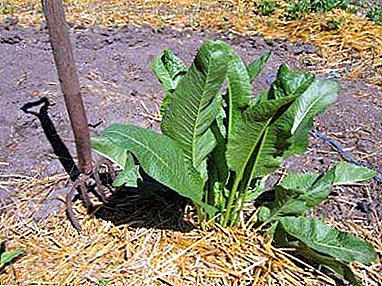 Before planting, it is desirable to add organic (humus) or mineral fertilizers to the ground. It is better to use complex mineral fertilizer, which consists of a mixture of phosphate, potash and nitrogen fertilizers, in the proportions necessary for good crop growth (indicated in the instructions for use).
Before planting, it is desirable to add organic (humus) or mineral fertilizers to the ground. It is better to use complex mineral fertilizer, which consists of a mixture of phosphate, potash and nitrogen fertilizers, in the proportions necessary for good crop growth (indicated in the instructions for use).- For planting, apply cuttings of horseradish rhizomes up to 20 cm long and one centimeter thick.
- Landing is carried out according to the scheme:
- a row spacing of 70 cm, in a row the distance will be 35-40 cm;
- planting is carried out by placing the cutting in the slopes;
- After planting, the soil should be slightly compacted.
Landing time is April. It is desirable that the soil was moistened.
Horseradish does not like shading and needs sunlight.
We offer you to watch a video about the landing of horseradish:
Care
- This culture is resistant to drought, but it is important to irrigate during dry periods.
- We need to ensure that weeds do not shade and do not clog the plants, we need to weed the beds.
- It is advisable to remove flower shoots. To avoid depleting plants.
- In July, you need to remove the side roots, by digging up the top of the plants. The roots are removed at a distance of 25 cm from the root. It is necessary for the cultivation of thick and large root. After this procedure, the root is again buried with earth and watered.
- For horseradish enough to hold the spring preplant soil fertilizer.
Diseases and pests
 The main pests of horseradish crops:
The main pests of horseradish crops:
- wavy flea;
- cabbage moth;
- cabbage bug.
Major Diseases:
- ascohitoz horseradish;
- white rot;
- verticillary wilting;
- downy mildew.
It is necessary to regularly inspect cultures and detect foci of infection. After which the plants are treated with fungicides and insecticides. If the disease was detected on time and an immediate fight was conducted, then the cultures will be preserved without much damage to the plants.
Harvesting
Harvesting of horseradish rhizomes is carried out in late October - early November, before the start of frost.
- First you need to cut the leaves, then with a shovel dig up the roots.
- Dug out the roots quickly lose their elasticity and presentation. Therefore, they immediately need to be moved to rooms with low temperature, where they are stored in boxes.
- Previously they need to be cleared from the soil and sorted by use: commodity and planting rhizomes.
Also collect green leaves with horseradish, for the preparation of marinade in canned food. This should be done before the wilting of the leaves begins (in August-September).
Product sales
Sales available in large trading organizations:
- the shops;
- supermarkets;
- cafe chains;
- as well as in canned food production plants.
You can also sell products to the market, where it is in demand by people, especially those who make homemade canned goods.
What are the possible problems and how to solve them?
With proper organization and efforts, this type of activity should not create any problems. Growing horseradish can be both an additional and main activity, which will bring a decent profit.
Growing horseradish is a cost-effective and payable type of activity that can be started even in your backyard. If you have large landing areas, it can become your main business, or it will open the way to creating a large diversified agricultural enterprise.


 Peasant farm - subject to a single agricultural tax (UAT).
Peasant farm - subject to a single agricultural tax (UAT). Before planting, it is desirable to add organic (humus) or mineral fertilizers to the ground. It is better to use complex mineral fertilizer, which consists of a mixture of phosphate, potash and nitrogen fertilizers, in the proportions necessary for good crop growth (indicated in the instructions for use).
Before planting, it is desirable to add organic (humus) or mineral fertilizers to the ground. It is better to use complex mineral fertilizer, which consists of a mixture of phosphate, potash and nitrogen fertilizers, in the proportions necessary for good crop growth (indicated in the instructions for use).